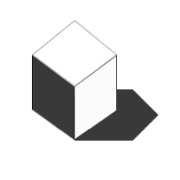
Creative Workshop on Machine Learning
Introducing GANs to young designers, interactive games on identifying and labeling images.
Time
Sept 2022 - Present
Location
Gensler, Los Angeles
Team
Gretchen G, Workshop Organizer & Designer
My Role
Workshop Designer
User Research
Deliverables
Presentation
Label Template
User interview and Survey
Tools:
Mentimeter, PPT, Sketches & Hand Drawing
Problem
There’s a great deal of information out there on machine learning, but it’s not always easy to distinguish fact from fiction or root out entry-level introductions.
In architecture, most designers lack basic knowledge of machine learning and GANs.
There are negligible efforts to educate young architects about machine learning.
How to educate young designers with little or no Machine Learning experience?
Solution
A fun, interactive, engaging workshop, designed to help anyone get their bearings with a complex topic - GANs.
Goals
Introduce current applications of ML in the design industry.
Help young architects understand basic concepts of datasets in ML.
01
02
Open discussion of ethical threats to our creativity.
03
Design Consideration
Before the workshop, we identified several Design principals that serve as guidance of this workshop:
01
Anonymous game-based activities
User Designers are afraid of being exposed to a lack of knowledge in the workplace.
Utilize Mentimeter games to get full involvement and a better picture of how much young architects know about ML.
Workshop Survey Result
02
Emphasize the dataset and reduce cognitive load
Emphasize data other than algorithms, more aligned with architecture design expertise.
Use the current project plan/facade as a data label example, and provided a draft interface to “draw” label.
We used a thought bubble diagram to guide the users, while keeping in mind the labeling process.
Label Tag
↓
Storytelling
↓
Generation
↓
Impact
Labeling process cheat sheet
02
Use Familiar words/images as examples
To reduce cognitive load, we used the current project plan/facade as a data label example. We provided a Labeling Template that helps them better label data by drawing/marking essential features.
We later realized that: familiarity has two sides, making architects misunderstand the architectural markups and data labels, making it harder to transform their thinking to a data-driven process.
Labeling Template, later evolved into our web interface
Results
Workshop Survey
Most designers have NOT used ML applications, and have better correct rates on images more relevant to architecture.

Key findings
Design for Learning Trajectory
Through our research, we identified a 5-stage trajectory that each designer goes through when they interact with Machine Learning and decided to use this learning trajectory to inform our design later.
User feedback
01
Designers lost storytelling vision from labeling data to generative results.
02
Designers have unrealistic expectations on ML generation
03
Designers are confused with familiar words: they tend to mix up the concept of data labels with design markups.
Lessons learned
Designers have not implemented ML in their actual design practice so it requires extra imagination in the final result.
Using designer familiar words on our interface may not always lead to a clear understanding. Designers may get confused with the new methodology.
We shall embed storytelling visions with machine learning.
Our Learning Trajectory ties in the technical concepts, practical applications, and ethical implications of generative modeling.















